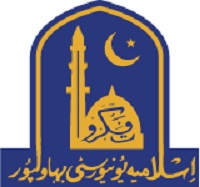A Cricital Study of the Motives and Suspicions of the Denial of Prophethood of the Hindu Sect Brahma
DOI:
https://doi.org/10.52461/pjqs.v2i1.2137Keywords:
Muhammad (PBUH), prophethood, Kalki Avatar, Hinduism, Brahman.Abstract
The mission of Prophet Muhammad (peace be upon him) is universal. In 2019, a Hindu scholar wrote a book called Kalki Avatar and Muhammad Sahib, in which he proved that the last leader is Muhammad, peace be upon him, from the Vedas and Hindu religious texts. Proved that there is a concept of prophethood in Hinduism and there is also a mention of Muhammad (peace be upon him). How Muhammad Mustafa (peace be upon him) can be meant. This article has been prepared to remove these complaints.
The second period of Hinduism is called the period of Brahman. Starting from 800 BC to 300 BC, this period lasted. Brahmin declared himself the best. Where there were changes in the teachings of the Vedas, there was also a significant change in the concept of prophethood and Risalat. Brahmin denied the prophethood of his religious supremacy because in that case his supremacy would have been preserved. Perhaps there is no concept of prophethood in it, but the fact is that there is a concept of this prophethood
The purpose of this paper is to make it clear that it is not far-fetched that our Leader Muhammad (peace be upon him) is meant by Kalki avatar. Denial of prophethood in Hinduism was replaced by the concept of avatar after some reform movements. Then the element of deity was added to avatar. In the commandments of Prophethood, there is moderation, there is equality, there is brotherhood, but the outdated system created by Brahman took the form of a humanistic system. Hinduism tried to keep its members together in different ways, but this religion got divided into different branches due to differences in ways of attaining salvation, rather these branches got separate religious identities.
References
ضیاء الرحمن اعظمی، فصول فی ادیان الہند (مدینہ منورہ: دارالبخاری للنشر والتوزیع، 1997ء)، 103۔
مانع، جہنی وغیرہ، الموصوعۃ المیسرۃ فی الادیان (ریاض: دارالندوہ العالمی، ط:2) 500/1۔
منو ،منو دھرم شاستر ،مترجم: ارشد رازی) لاہور: نگار شات پبلشرز ، 2007ء)باب:2، ق 44، ص 46۔
ابن حزم علی بن احمد اندلسی، الفصل فی الملل (بیروت: دارالکتب العلمیہ، 1979ء)، 70 : 2۔
محمد بن عبدالکریم شہرستانی، الملل والنحل (بیروت: دارالمعرفہ، 1404ھ)، 249: 2۔
ایضاً، 109: 1۔
حافظ محمد شارق، ہندو دھرم اور اسلام کا تقابلی مطالعہ، 41۔
امیر حمزہ، انسانیت کا قاتل ہندو دھرم ) لاہور: دار الصفہ پبلیکیشنز، 1988ء)، 25۔
جہنی، مانع بن حماد وغیرہ، الموصوعۃ المیسرۃ فی الادیان، 29: 1۔
محمد ابو زہرہ ،الفرق الاسلامیہ (بیروت: داراحیاء التراث العربی،2011ء)، 97: 3۔
منوسمرتی ،102،3:9
سید احمد سعید کاظمی، مقالات کاظمی (ملتان: کاظمی کتب خانہ، 2007ء)، 11: 1۔
ابو سعید عبدالرحمن بن محمد، الغنیۃفی اصول الدین ) بیروت: مؤسسۃ الخدمات، 1987ء)148: 1۔
ابو الحسن علی بن احمد اموی سبتی،تنزیۃ الانبیاء عمانسب الیھم مثالۃ الاغیاء (بیروت: دارالفکر، 1990ء)، 41: 1۔
انیس احمد مدنی فلاحی، مذاہب عالم (لاہور: مکتبہ قاسم العلوم )، ص243۔
فلاحی ، مذاہب عالم، ص 244۔245۔
الصف61: 6 ۔
Downloads
Published
How to Cite
Issue
Section
License
Copyright (c) 2023 Pakistan Journal of Qur’ānic Studies

This work is licensed under a Creative Commons Attribution-NonCommercial 4.0 International License.
You are free to:
• Share: copy and redistribute the material in any medium or format.
• Adapt: remix, transform, and build upon the material.
• Attribution: You must give appropriate credit, provide a link to the license, and indicate if changes were made. You may do so in any reasonable manner, but not in any way that suggests the licensor endorses you or your use.
• NonCommercial: You may not use the material for commercial purposes.
• No additional restrictions: You may not apply legal terms or technological measures, that legally restrict others from doing anything the license permits








